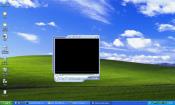So then, you have the 6-chanel RAID PCI card that you bought off eBay and a couple of old, horded hard drives. Stoked, you’re ready to create your very own super hard drive with one terabyte of disk space! You install the hardware and boot your computer waiting for the BIOS to finish the POST. Suddenly, the Windows (or Linux) boot screen displays when you are expecting the controller card’s BIOS to kick in to configure the RAID drive. Maybe it was a mistake. You restart the computer hoping for the best. Alas, the RAID setup option doesn’t appear again. Too bad you bought this brand-less card from China (eBay) without any documentation. So then, what now?
Has this scenario ever happened to you before? The BIOS does not recognize the hardware but the operating system does after the power-on-self-test. This problem is kind of like a chicken-or-the-egg dilemma. I mean, its only great that Windows recognizes the controller card if you’re booting from the motherboard’s integrated disk controller. But what if you want to boot from a hard disk that is connected to a secondary controller card? This exact scenario happened to me a couple days ago. It literally took me two whole days of research, agony, and forum scourging. But I finally found the answer. Who’s to blame for this bug?
Read the rest of this entry »
 So then, you’ve got the “Fastest Package” for the Verizon FiOS ultra high-speed fiber optic. A whooping 50 Mbps download speed and a 20 Mbps upload speed! That means 802.11b WiFi routers won’t even be able to handle those speeds! Nevertheless, that possible 11 Mbps bottleneck should not be your only concern. If you’re going to be utilizing a number of network intensive applications (*coughGnuettllaEmuleBittorrent*) you’ll need to make some other adjustments to your hardware and software network setup. This is one of many things you can do to optimize the network. However, it is the first thing I try to remember when setting up any node or router on my home network.
So then, you’ve got the “Fastest Package” for the Verizon FiOS ultra high-speed fiber optic. A whooping 50 Mbps download speed and a 20 Mbps upload speed! That means 802.11b WiFi routers won’t even be able to handle those speeds! Nevertheless, that possible 11 Mbps bottleneck should not be your only concern. If you’re going to be utilizing a number of network intensive applications (*coughGnuettllaEmuleBittorrent*) you’ll need to make some other adjustments to your hardware and software network setup. This is one of many things you can do to optimize the network. However, it is the first thing I try to remember when setting up any node or router on my home network.
Possible Names
This setting has many names. You can look for “Maximum Ports,” “Maximum Number of Connections,” “Max Active Links,” “Max Half-open/Duplex Concurrent Connections,” etc. Like the names imply, this setting controls how many connections can be established between nodes. Why is this important? It allows the client computer to contact many more server hosts at the same time. Off the top of my head, this would be beneficial to multi-segment download managers programs like DownThemAll!, Internet browsers (especially with multiple tabs), and (lower voice) P2P file sharing programs.
Read the rest of this entry »
 In my last article on the freeware review, I wrote about automatically saving multiple screenshots with smartision ScreenCopy. Try using this program with video. When I was trying to save a screen shot of one of my DVDs for my desktop wallpaper, I captured the entire screen … sans the actual video. Even when I tried pressing the manual “Print Screen” button on the keyboard I got the same result as I pasted the data in IrfanView.
In my last article on the freeware review, I wrote about automatically saving multiple screenshots with smartision ScreenCopy. Try using this program with video. When I was trying to save a screen shot of one of my DVDs for my desktop wallpaper, I captured the entire screen … sans the actual video. Even when I tried pressing the manual “Print Screen” button on the keyboard I got the same result as I pasted the data in IrfanView.
Why is that? I can never dump the screen of any video content? My first response was that it was a copy-protection mechanism, sort of like DRM. But the real, underlying problem was the way my media player rendered the video content.
Read the rest of this entry »

 So then, you’ve got the “Fastest Package” for the Verizon FiOS ultra high-speed fiber optic. A whooping 50 Mbps download speed and a 20 Mbps upload speed! That means 802.11b WiFi routers won’t even be able to handle those speeds! Nevertheless, that possible 11 Mbps bottleneck should not be your only concern. If you’re going to be utilizing a number of network intensive applications (*coughGnuettllaEmuleBittorrent*) you’ll need to make some other adjustments to your hardware and software network setup. This is one of many things you can do to optimize the network. However, it is the first thing I try to remember when setting up any node or router on my home network.
So then, you’ve got the “Fastest Package” for the Verizon FiOS ultra high-speed fiber optic. A whooping 50 Mbps download speed and a 20 Mbps upload speed! That means 802.11b WiFi routers won’t even be able to handle those speeds! Nevertheless, that possible 11 Mbps bottleneck should not be your only concern. If you’re going to be utilizing a number of network intensive applications (*coughGnuettllaEmuleBittorrent*) you’ll need to make some other adjustments to your hardware and software network setup. This is one of many things you can do to optimize the network. However, it is the first thing I try to remember when setting up any node or router on my home network. In my last article on
In my last article on 